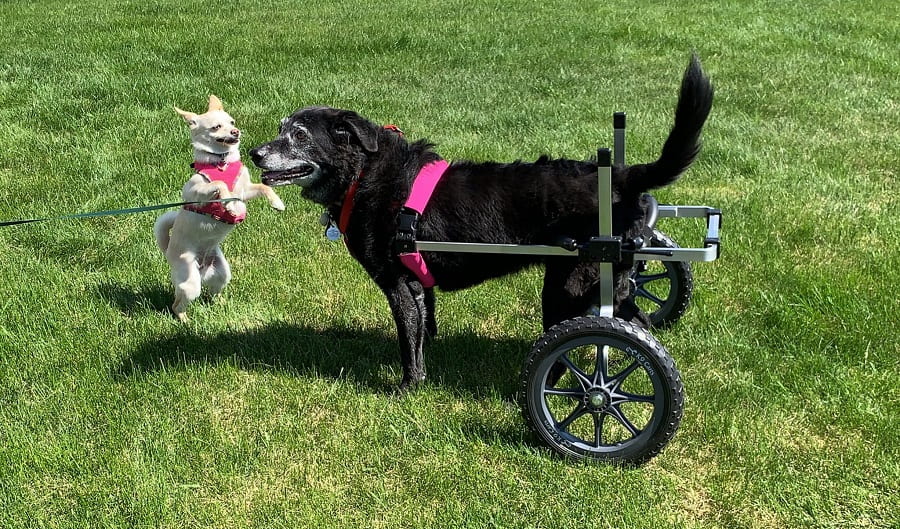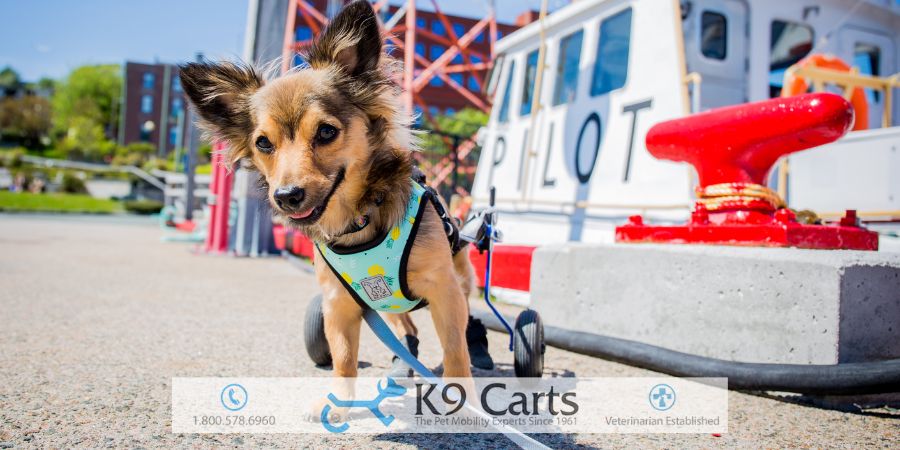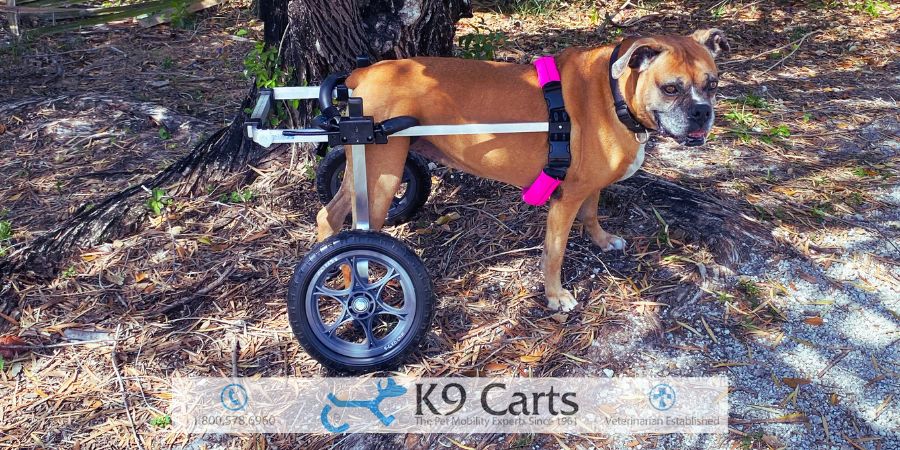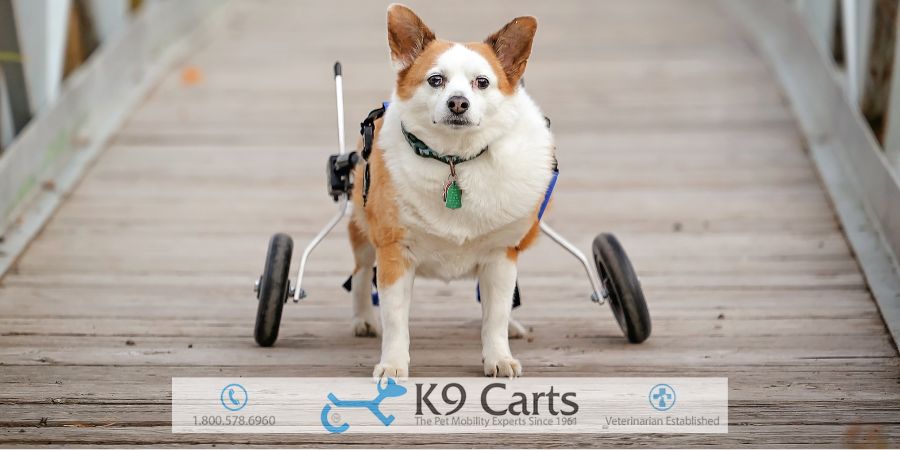Leg Tremors in Dogs: Why Are My Dog's Back Legs Shaking or Quivering?

Understanding Leg Tremors in Dogs
As a loving dog owner, you may feel understandably worried, confused, or alarmed by the sight of tremors in your dog's rear legs. This problem, which may stem from any number of causes, can make getting around a serious challenge for your beloved canine companion. Your dog may have trouble walking, standing still, or standing up after lying down. If this problem goes unaddressed, your pet might have to give up all his favorite activities.
Fortunately, you can help your best friend regain or optimize his mobility through the right combination of therapies, lifestyle changes, and assistive devices. Let's take a closer look at the problem of rear leg tremors in dogs, from the reasons for these abnormalities to the many potential remedies available to pet owners.
Why Are My Dog's Back Legs Shaking?
Before you assume that your dog has a debilitating chronic problem, bear in mind that tremors can occur for a variety of reasons, not all of which present cause for alarm. Cold weather, for instance, can cause your dog to shiver. Electrolyte imbalances can also cause shivering or trembling; fortunately, these imbalances usually respond to rehydration and/or nutritional therapy. Toxin ingestion may also cause neurological irregularities that result in tremors.
Shaking or quivering in your dog's rear legs may stem from pain caused by degenerative joint problems. For instance, osteoarthritis (a common condition in dogs as well as humans) causes pain when the cartilage between bone ends starts to deteriorate, allowing for bone-on-bone friction. If your dog experiences such chronic pain in his rear legs, he may exhibit tremors when he tries to stand or walk.
Hip dysplasia is another painful condition afflicting the rear legs. In this condition, malformed hip joints become unstable, contributing to joint damage, chronic pain, and resulting in shaky legs and tremors when the dog tries to use the afflicted joints.
Chronic tremors that tend to grow worse over time may indicate a neurological disorder. One such problem, degenerative myelopathy, is especially prevalent in German Shepherd Dogs, Collies, Siberian Huskies, and crosses of these breeds. however, it can also affect a wide range of other breeds such as:
- Boxers
- Pugs
- Wirehaired Fox Terriers
- Standard and Miniature Poodles
- Welsh Corgi Pembrokes
- Bernese Mountain Dogs
- Kerry Blue Terriers
Degenerative myelopathy involves a progressive thinning of the protective myelin sheath that provides insulation for painal nerves. This degeneration typically causes hind leg weakness and tremors, first in one rear leg, then in the other (it does not affect the front legs).
Thankfully, this condition does not cause pain. However, it makes some dogs so unstable that even a slight push from a standing position might knock them over, at which point they might find it exceptionally hard to get back up again.
Hallmark Symptoms That Merit Your Attention
Any shaking or quivering in your dog should prompt a certain degree of concern. If the tremors come on suddenly and seem to affect the entire body, suspect toxin ingestion, epilepsy, or some other systemic issue that calls for emergency veterinary care.
Tremors that appear confined to the rear legs and only become evident when your pet tries to manipulate these limbs will more likely stem from a non-emergency (but still worrying) situation such as a chronic degenerative disorder. If knuckling in your pets' rear feet occurs along with shaky rear legs, or if his hindquarters sway slightly while he's standing still, you may be seeing classic symptoms of degenerative myelopathy.
Tremors may mean different things depending on the age of your dog. If your puppy or adolescent dog develops a tremor in his rear legs, it might mean that he has contracted a serious infection such as distemper. Tremors that appear in a dog's senior years, along with other symptoms such as stiffness or lameness, may stem from age-related complaints such as osteoarthritis.
Hip dysplasia, while present from birth, may take years to start affecting your dog's steadiness. Even the size of the breed can point toward a particular type of tremor disorder. For instance, many Maltese and West Highland White Terriers (as well as other breeds) can develop a condition called generalized tremor syndrome, or GTS, for no obvious reason.
Diagnostic Techniques and Procedures
If your dog suffers from shaky or trembling rear legs, your veterinarian can run various tests and diagnostic procedures to determine the underlying cause. Joint problems will most likely appear on X-rays, while analysis of laboratory samples can detect toxins, electrolyte imbalances, or metabolic problems such as hypoglycemia.
Your vet may also schedule a CT scan or MRI. Neurological problems won't usually show up on routine lab tests. If your vet suspects this kind of problem, your pet may need his cerebrospinal fluid evaluated.
Treatment Options for Hind Legs Shaking in Dogs
Medical treatment may help your dog with any chronic pain, muscle weakness, or neurological dysfunction that affects the strength and stability of his rear legs.
Conservative options for treating degenerative joint problems include anti-inflammatory drugs and foods, massage therapy, light exercise, and ergonomic changes around the house. Severe joint issues may respond to more invasive techniques such as joint replacement or fusion surgery.
Your veterinarian can prescribe medication or other treatments to cope with an underlying metabolic imbalance. Unfortunately, some neurological problems such as degenerative myelopathy currently have no known cure. Even so, regular exercise can still help to reverse or reduce atrophy in weakened leg muscles.
Your veterinarian may recommend a special diet to combat obesity, which can aggravate the condition by placing additional stress on the rear legs. Nutritional therapy may also prove helpful. Regular doses of Vitamins B, C, and E, N-acetylcysteine, and epsilon-aminocaproic acid may slow the progression of degenerative myelopathy when combined with the steroid prednisone.
The Importance of Assistive Devices Like Dog Wheelchairs
If your dog's rear leg tremors or weakness reach the point that he can no longer use his limbs comfortably or confidently, it's time to look into supportive devices that will bear his weight and help him get around -- such as the vet-approved dog wheelchair by K9 Carts.
The wheelchair provides support for the belly, spine, and rear legs, leaving the healthy front legs free to help your dog navigate his favorite roads and walking paths. Sturdy wheels offer smooth rolling motion and years of reliable use. The specially-designed harness can even slow the advance of progressive neurological problems afflicting the spine and rear legs. You even have the option of installing added front support.
Since dogs of any size can suffer from shaky rear legs, you'll be glad to know that the K9 Carts Rear Support Dog Wheelchair is highly customizable and adjustable. Start by taking four simple measurements of your dog's height, length, girth, and width.
Our team can create a wheelchair fitted to these numbers. If your dog needs even more help than our rear support dog wheelchair can provide, take a look at our full support dog wheelchair options. We'll be happy to advise you on the most sensible choice for your beloved pet.
Once you've selected the ideal wheelchair for your dog, you'll need to get him acquainted with it. A dog that has gotten used to pain, weakness, and instability may need some convincing to give this strange beast a try. Take it slow, give him a chance to grow familiar with his wheelchair, without necessarily going anywhere at first.
Once he understands that the wheelchair is safely and securely supporting his rear legs, you can start him on short walks to help him get the feel of his regained mobility. Before long, you may even find that you have trouble keeping up with him!
Give Your Dog's Rear Legs the Assistance They Need
Nerve dysfunction, joint problems, painful chronic conditions, and biochemical imbalances can make a dog of any age wobbly, insecure, and unable to have much fun. But it's a great comfort to realize that you don't have to let his rear legs waste away or turn him into an invalid.
Take action by contacting your veterinarian, getting a confirmed diagnosis, and starting your dog on whatever treatment plan might do him good. At the same time, provide him with the assistive devices he needs -- by making a call to your friends at K9 Carts. We look forward to helping your dog fight back against rear leg tremors or weakness so that he can get back to enjoying everyday life again. Contact us today for more information!
References:
https://www.ethosvet.com/blog-post/degenerative-myelopathy/






